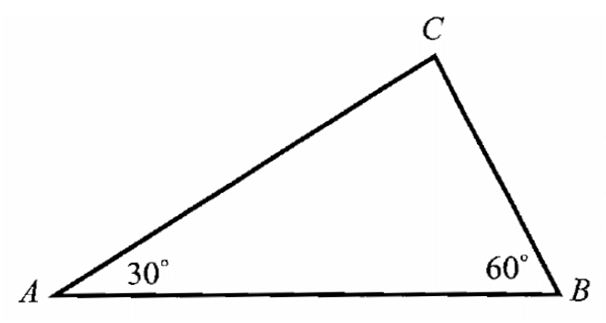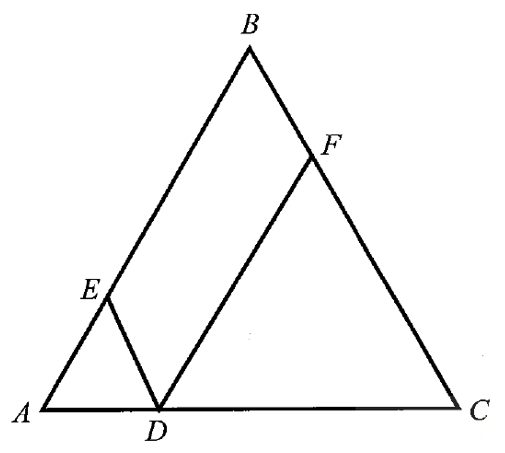PROPERTIES OF POISSON DISTRIBUTION
1. n the number of trials is indefinitely large. That is,
n → ∞
2. p the constant probability of success in each trial is very small. That is,
p → 0
3. Poisson distribution is known as a uni-parametric distribution as it is characterized by only one parameter m.
4. The mean of Poisson distribution is given by m. That is,
μ = m
5. The variance of the Poisson distribution is given by
σ2 = m
6. Like binomial distribution, Poisson distribution could be also uni-modal or bi-modal depending upon the value of the parameter m.
m is a non integer ----> Uni-modal
Here, the mode = the largest integer contained in m
m is a integer ----> Bi-modal
Here, the mode = m, m - 1
7. Poisson approximation to Binomial distribution :
If n, the number of independent trials of a binomial distribution, tends to infinity and p, the probability of a success, tends to zero, so that m = np remains finite, then a binomial distribution with parameters n and p can be approximated by a Poisson distribution with parameter m (= np).
In other words when n is rather large and p is rather small so that m = np is moderate then
(n, p) ≅ P(m)
8. Additive property of binomial distribution.
Let X and Y be the two independent Poisson variables.
X is having the parameter m1
and
Y is having the parameter m2
Then (X + Y) will also be a Poisson variable with the parameter (m1 + m2).
Practice Problems
Problem 1 :
If the mean of a Poisson distribution is 2.7, find its mode.
Solution :
Given : Mean = 2.7
That is, m = 2.7
Since the mean 2.7 is a non integer, the given Poisson distribution is uni-modal.
Therefore, the mode of the given Poisson distribution is
= Largest integer contained in m
= Largest integer contained in 2.7
= 2
Problem 2 :
If the mean of a Poisson distribution is 2.25, find its standard deviation.
Solution :
Given : Mean = 2.25
That is, m = 2.25
Standard deviation of the Poisson distribution is given by
σ = √m
= √2.25
= 1.5
Problem 3 :
If the random variable X follows a Poisson distribution with mean 3.4, find P(X = 6).
Solution :
Mean = 3.4
P(X = x) = (e-λ λx)/x!
P(X = 6) = (e-3.4 3.46)/6!
= 0.072
Problem 4 :
The number of industrial injuries per working week in a particular factory is known to follow a Poisson Distribution with mean 0.5.
Find the probability that,
a) In a particular week there will be
i) less than 2 accidents
ii) more than 2 accidents.
b) in a three week period there will be no accidents.
Let A be the number of accidents in one week, so A ~ P0(0.5)
i) P(x < 2)
Number of accidents should be lesser than 2.
P(x < 2) = P(x = 0) + P(x = 1)
= (e-0.5 0.50)/0! + (e-0.5 0.51)/1!
= e-0.5 + e-0.5 0.5
= e-0.5(1 + 0.5)
= e-0.5(1.5)
= 0.9098
ii) P(x > 2) = 1 - P(X ≤ 2)
= 1 - 0.9856
= 0.0144
b) P(0 in 3 weeks)
= (e-0.5)3
= 0.223
Problem 5 :
If X~P(λ) and P(X = 4) = 3P(X = 3), find λ and P(X = 5).
Solution :
P(X = 4) = 3P(X = 3)
P(X = x) = (e-λ λx)/x!
(e-λ λ4)/4! = 3(e-λ λ3)/3!
λ/4 = 3
λ = 12
P(X = 5) = (e-12 125)/5!
= 6.15(248832) / 120
= 12752.6
Problem 6 :
If the mean of a Poisson variable X is 1, what is the P(x = takes the value at least 1) ?
a) 0.456 b) 0.821 c) 0.632 d) 0.254
Solution :
P(X = x) = (e-λ λx)/x!
Mean = λ = 1
At least 1, then x ≥ 1
P(x ≥ 1) = 1 - P(x < 1)
So P(x < 1) = 1 - P(X = 0)
= 1 - (e-1 10)/0!
= 1 - 1/e
= 1 - 1/2.718
= 1 - 0.36
= 0.63
so, option c is correct.
Problem 7 :
IF X ~ P(m) and its coefficient of variation is 50, what is the probability that X would assume only non zero values ?
a) 0.018 b) 0.982 c) 0.989 d) 0.976
Solution :
Coefficient of variation = (Standard deviation / mean) x 100%
Standard deviation = √m
50 = (√m/m) x 100
50m = 100√m
50m/100 = √m
m/2 = √m
m2/4 = m
m2 = 4m
m2 - 4m = 0
m(m - 4) = 0
m = 0 and m = 4
At least 1, then x ≥ 1
P(x ≥ 1) = 1 - P(x < 1)
So P(x < 1) = 1 - P(X = 0)
= 1 - (e-4 40)/0!
= 1 - e-4
= 1 - (1/e4)
1 - 1/54.6
= 1 - 0.018
= 0.982
So, option b is correct.
Problem 8 :
For a Poisson variate X, P(x = 1) = P(x = 2), what is the value of x?
a) 1 b) 1.50 c) 2 d) 2.5
Solution :
P(x = 1) = P(x = 2)
P(X = x) = (e-λ λx)/x!
(e-λ λ1)/1! = (e-λ λ2)/2!
1 = λ/2
λ = 2
Mean = variance
So, 2 is the answer option c.
Kindly mail your feedback to v4formath@gmail.com
We always appreciate your feedback.
©All rights reserved. onlinemath4all.com
Recent Articles
-
Derivative of Absolute Value of x Using Limit Definition
Apr 23, 25 11:11 AM
Derivative of Absolute Value of x Using Limit Definition -
Digital SAT Math Problems and Solutions (Part - 149)
Apr 23, 25 02:33 AM
Digital SAT Math Problems and Solutions (Part - 149) -
Digital SAT Math Problems and Solutions (Part - 148)
Apr 22, 25 08:20 AM
Digital SAT Math Problems and Solutions (Part - 148)

